- Home
- Adam Roberts
The Riddles of The Hobbit Page 2
The Riddles of The Hobbit Read online
Page 2
Or ever the battered liners sank
With their passengers to the dark
I was head of a Walworth Bank,
And you were a grocer’s clerk.
I was a dealer in stocks and shares,
And you in butters and teas;
And we both abandoned our own affairs
And took to the dreadful seas.
Wet and worry about our ways—
Panic, onset and flight—
Had us in charge for a thousand days
And thousand-year-long night.
We saw more than the nights could hide—
More than the waves could keep—
And—certain faces over the side
Which do not go from our sleep.
We were more tired than words can tell
While the pied craft fled by,
And the swinging mounds of the Western swell
Hoisted us Heavens-high …
Now there is nothing—not even our rank—
To witness what we have been;
And I am returned to my Walworth Bank
And you to your margarine!
To read this poem is to understand not only its specific referents—that these two men left civilian jobs to serve in the Royal Navy, and afterwards went back to civilian life—but also to comprehend that as much as it celebrates the more traditional martial values of bravery, persistence, duty and so on, it also heroises something more specific, a mode of English (we could say; Old English) reticence, or understatement. The rhetorical term for this is litotes, something of which Anglo-Saxon poets were extremely fond. When a man achieves something very large, for example heroic feats of battle (or in Kipling’s case, heroic feats of sheer survival) it is not only more seemly, it is more rhetorically forceful and effective to understate rather than overstate the achievement. We could say: the banker and the clerk are no small heroes.
It would not be right to call this poem a riddle as such, of course, since it does not seek to hide its meaning, although part of its affect is generated in ways that are more riddling. I very much like, for instance, the way marine terminology haunts even the landlubber existences of these two characters: such that ‘Walworth Bank’ sounds like it belongs on a naval map alongside Dogger Bank, and ‘margarine’ sounds like a sea-y ‘mar’ word. Here is another Kipling poem, ‘The Egg Shell’ (originally written in 1904, but enlarged and republished in 1916):
The wind took off with the sunset—
The fog came up with the tide,
When the Witch of the North took an Egg-shell
With a little Blue Devil inside.
‘Sink,’ she said, ‘or swim,’ she said,
‘It’s all you will get from me.
And that is the finish of him!’ she said
And the Egg-shell went to sea.
The wind fell dead with the midnight—
The fog shut down like a sheet,
When the Witch of the North heard the Egg-shell
Feeling by hand for a fleet.
‘Get!’ she said, ‘or you’re gone,’ she said.
But the little Blue Devil said ‘No!’
‘The sights are just coming on,’ he said,
And he let the Whitehead go.
The wind got up with the morning—
The fog blew off with the rain,
When the Witch of the North saw the Egg-shell
And the little Blue Devil again.
‘Did you swim?’ she said. ‘Did you sink?’ she said,
And the little Blue Devil replied:
‘For myself I swam, but I think,’ he said,
‘There’s somebody sinking outside.’
Roger Peppe recalls a family recital of this poem in which the poem was read both as ‘a nice piece of nonsense’ and a technically specific piece of naval realism.5 The latter reading, I would suggest, enhances rather than annihilates the former. That is how riddles work. A ‘whitehead’ is a naval torpedo (named after its inventor, Robert Whitehead) and this is a poem that tropes the World War I war at sea as a sort of dark fairy tale. The eggshell submarine is a particularly nice notion; not just its fragility but the sense of it as hatching something out—death, in this case. Also neatly worked is the way the submarine’s captain’s name suggests not only his diabolic purpose, but some sense of his depression: his mood mimicking his physical descent through the waters. It can not be a jolly business, lurking through the waters and killing civilians. It is the sensitivity of Kipling’s touch here that is the really remarkable thing; the way he balances the poem between a surface-meaning akin to the phantasmagoria of fairy tale and a deeper meaning tied to actual naval operations. It is something that gains force from precisely the tension between ships on the surface of the water and submarines below that surface.
It does this powerful poem no disservice to read it as a riddle. On the contrary, it is a literary work that points up how expressive and potent riddling can be as a textual strategy. Some poetry is more straightforwardly riddle-like than others. John Donne’s ‘A Valediction, Forbidding Mourning’ (written 1611) tropes the situation of the lovers as like the two spars of a hinged compass or divider. Four centuries later Craig Raine wrote a poem called ‘The Onion, Memory’ (1978). In a sense both poems are built straightforwardly around riddles: ‘how is love like the two limbs of a divider?’; ‘why is memory an onion?’ Donne’s poem gains force from the oddity and novelty of its conceit, where Raine goes a step further, with a conceit that is not only strikingly odd and novel but cleverly wrongfooting too. My experience of teaching Raine’s poems to students is that readers asked ‘why is memory like an onion?’ will tend to focus upon the physicality of the vegetable and say things like ‘because it is layered?’ or ‘because it grows as it is buried?’ Raine’s solution to his own riddle is neater, and more moving (memory is like an onion because it makes me cry).
I should add that not all poetry works this way; perhaps not most poetry. Metaphysical and Martian poetry both tend to foreground riddling conceits, but I do not want to limit myself to those two modes only. If I tell you that ‘any poem requires a sort of unriddling, even if it is merely the construction of a context that makes sense of the direct’, you might object that this dilutes the meaning of the word ‘riddling’ to the point where it loses purchase. But to argue that is, tacitly, to imply that most poetry can be simply decoded—that the world itself is simple. This is not right. The world is not simple, at least in the things that matter the most. By troping reading as ‘unriddling’ I am talking about more than simply solving certain clues, or slotting a particular solution into place. I am, on the contrary, thinking of ‘the riddle’ as the idiom of all epistemological process. Here is a poem that can neither be described as ‘Metaphysical’ nor ‘Martian’, but which is nonetheless (I think) a kind of riddle.
She tells her love while half asleep,
In the dark hours,
With half-words whispered low:
As Earth stirs in her winter sleep.
And puts out grass and flowers.
Despite the snow
Despite the falling snow.6
I quote this famous Robert Graves lyric in part because Graves (whom Tolkien met, and found interesting, ‘though—an ass’) was himself fascinated by the thought of poetry as in the largest sense a riddle.7 He comes into my discussion below in Chapter 5. But I also quote it because it is, we might think, very far away from the surface opacities of a conventional riddle. The lines are clearly expressed, the sense seemingly straightforward. Yet engagement with the poem requires us at the very least to intuit who ‘she’ might be; what her circumstances are; whether she is alone. This is not to say very much, for of course all texts require this of us. But there is more to it. In this case, the ‘solution’ of the poem provided by a simple reading takes us to something—love—that is very far from simple. Indeed, the unsimpleness of love is what the poem is about, and Graves’ obliqueness and suggestiveness are not incidenta
ls, or steps on the path to a straightforward comprehension. What Wallace Stevens famously identified as ‘the beauty of inflections’ is one kind of poetic-semantic riddling, which in turn can be construed. The beauty of innuendoes is another, deeper kind.
Of course, the riddling note or tone is not always appropriate, even to poetry that sets out to address deep mysteries in a playful manner. When W. H. Auden was revising his For the Time Being: A Christmas Oratorio (1944) he cut out the following stanza—
Mary the Modest was met in the lane
By Someone or Something she couldn’t explain.
Joseph the Honest looked up and God’s eye
Was winking at him through a hole in the sky.8
We might ask: what is wrong with this, as poetry? It is not that far removed, tonally or in terms of its approach to the Christmas mysteries, from the other For The Time Being stanzas that Auden kept in the poem—although, having said that, it is obviously far enough away for Auden to ditch it. I wonder if the problem with these lines is not that they are riddling, but rather than they are flippantly so. This in turn points towards a more important point. Some riddles are flippant (some paradoxes are flat; some mysteries banal; some questions trivial). But some riddles are not, and amongst this latter category are the riddles in, and of, The Hobbit.
There is one further sense in which this sort of hermeneutic opens up the possibilities of reading Tolkien. After the success of The Lord of the Rings, many reviewers and readers became persuaded that the novel was an allegory for the Second World War, the large-scale historical trauma through which Tolkien lived as he wrote the novel. The ‘ring’, according to this reading, is an allegorical representation of ‘the atomic bomb’; Sauron is Hitler, Frodo and Sam represent the humble British solider. Tolkien repudiated these sorts of readings, and took time in his preface to the novel to express himself as unambiguously as he could. ‘I cordially dislike allegory in all its manifestations’, he notes, ‘and always have done so since I grew old and wary enough to detect its presence.’9
We need to take Tolkien’s cordial dislike seriously, I think. It is more than just aesthetic eccentricity. Taking the characters of any story ‘allegorically’ is to subordinate their individuality to some larger scheme, a notion repellent to Tolkien on religious and ideological as well as artistic grounds: ‘the actors’, as he put it, ‘are individuals’.10 On one level, he is making a fundamentally religious point. For a Christian, Christ is not a ‘symbol’ of God; he does not (as it were) allegorically represent God in the mortal realm. Christ is God, incarnated in human form. And, to go down to the level of doctrinal disagreement, for a Catholic the communion wine and bread at mass do not ‘symbolise’ God’s blood and body, they literally, if rather mysteriously, are those things. Part of Tolkien’s approach to Fantasy, something to which he gave the Coleridgean name ‘Subcreation’, is a belief that the true artist’s creations exist as a small-scale, secondary version of what God Himself did when he created the cosmos: its relationship to larger reality being that of a ratio inferior that draws its force from the superior creative context. This in turn means that Tolkien’s vision of Middle-earth is profoundly sacramental. Something similar is true of his friend C. S. Lewis’s creation, Narnia. Lewis was more comfortable with allegory than Tolkien, but it would be a mistake (though one commonly made) to read The Lion, The Witch and the Wardrobe as an allegory of the Christian passion. Lewis’s Aslan does not allegorise Christ; he is the form Christ’s incarnation would take in a world of talking animals. Perhaps this looks like a quibble, but I do not think it is. It goes to the heart of what Lewis and Tolkien are doing as a writers of Fantasy—indeed it goes to the heart of that genre, Modern Fantasy, that is so largely formed in their image.
A book such as mine takes seriously two things—Tolkien’s The Hobbit and riddles more generally—that many critics do not take seriously. It would overstate things to say that there is a prejudice against The Hobbit in Tolkien scholarship, although most Tolkienists I know think of it as a lesser text when set alongside The Lord of the Rings—a children’s story with little more to it than a desire to divert and entertain. That I do not share such a view should be obvious from the fact that I have set out to write this book at all, and the justification for my dissent should emerge from the pages that follow. ‘The Hobbit’, as Tolkien wrote to Stanley Unwin in 1947, in a letter quoted as one of the epigraphs to this chapter ‘was after all not as simple as it seemed.’ I have decided to take him at his word. As for riddles: it is the process of engaging them, rather than the determining of any one ‘answer’, that is where their capacity for illumination is located.
Light is the fons et origo of Tolkien’s imaginary cosmos, as it is of our cosmos (according, at least, to Genesis); and most of Tolkien’s art is concerned, in deep ways, with exploring the interactions between seeing and unseeing, visibility and invisibility, brightness and darkness. It is worth holding in mind that a riddle, formally speaking, is a small example of something unseen presenting itself to us and asking to be seen. It is, as it were, a thing wearing a ring of invisibility. Our wits are the mode by which it can be made visible again. ‘Blessed are the eyes’, Christ told his disciples, ‘which see the things which ye see. For I tell you, that many prophets and kings have desired to see those things which ye see, and have not seen them’ (Luke 10:23). To the extent that riddles are seen as a negligible, or even despicable, mode of poetry I have attempted, here, to take them much more seriously, as both examples of and tropes for the broader mystery of what is hidden and what revealed in literature.
There is a danger, of which I am of course aware, that a critic working on a theme or topic for any length of time may become Casaubonised—that, in other words, s/he may come to believe that her pet subject actually is the key to all mythologies. The problem with riddles, it seems to me, is not that they are a trivial and marginal manifestion of culture; but on the contrary that they are rather too far-reaching and profound.
In other words my argument is a little less banal than ‘reading is deducing things from the clues provided by the text’; or at least I hope it is. It is that even in texts that seem straightforward, interpretation is much more ironic than mimetic; more a process of opening disclosure than a narrowing-down enclosure. One of the points of a poem like ‘A Martian Sends A Postcard Home’ is that it is only familiarity (or habitude) that stands between us and a vision of the world as a fascinating but baffling series of puzzles to be decoded. That, we could say, if the doors of perception were cleansed to a properly Martian cleanliness we should see the world as it truly is, a riddle.
This in turn connects with the larger sense that human subjectivity—mind, personality, soul—is itself a riddle. Put like that the sentiment may come over as windy, the tawdry vatic in specie. But I mean it in a particular way. It is, after all, one of Freud’s key insights that human life is not simple or straightforward; that we do not know ourselves after the direct mimetic model of a photograph or a textbook, but rather that our self-knowledge is an ironic business, slant, full of obscurity and gaps. Freud proposes that we are a riddle unto ourselves, and sets up psychoanalysis as a means of unriddling the puzzle of psychosis, trauma, hysteria or plain old human unhappiness. A dream (say) may appear to be one thing, but it is in fact something else; it is, in short, a riddle to be decoded with access to the right sorts of reading competencies. In Chapter 9 below I say something about the complexities of our psychological fantasies, and the relation of the desire they encode to the body of writing that is called, largely for bookselling convenience, ‘Fantasy’—the genre of course to which The Hobbit belongs.
The Hobbit is not only a ‘Fantasy’ book; it is a book for children. This is also relevant to what I want to try and argue. It is, it seems to me, not coincidental that so many childrens’ and ‘Young Adult’ books are so full of puzzles and riddles, from the Alice books to the anagrams and spell-puzzles of Harry Potter. These are books about ‘growing up’. The Hobbit
is likewise about Bilbo ‘growing up’, or least growing into something more than he previously was. As a hobbit he combines a child’s stature with a middle-aged man’s set-in-his-ways mind, and his adventures challenge both aspects of him. The point is that the world is more of a riddle when we are growing up—indeed, ‘growing up’ is in large part (inevitable physiological changes aside) a process of unriddling the many puzzles, larger and small, that experience joyfully showers upon us. One of the ways the unexamined wisdom of children manifests in the world, one of the ways in which the child is father to the man, is the way kids ask riddles all the time: why is the sky blue? Why is water wet? Why is that man crying? Why are that woman and that man cuddling so close? You might object that these are simple questions, not riddles; and certainly children do ask a great many questions. But ‘why is the sky blue?’ is more than a question (after all: could you supply a 5-year old child with an answer in a way that did not merely baffle her?) It is a way of reaching out towards the way beauty and wonder overroof our mundane worlds. It is to take the step beyond merely registering the glory of a blue sky, into the realm of wanting to comprehend that glory. It is, that is to say, intensely human.
In what follows a great many riddles are cited, and to many of these I offer solutions—if possible, I try to offer more than one. This is in the nature of what I am doing, and for it I make no apology. Riddling is as much as anything about ingenuity, and I value ingenuity very highly—find it baffling, in fact, how little regard most people have for it as a human skill. At any rate, I take it that a mode that prizes invention and ingenuity is best discussed ingeniously. A reader may ask: ‘ah, but is what you are arguing here true?’ That is a valid and important question, but it is not, I submit, a simple question. Truth is a riddle whose premises may not be what you thought, at first, they were; and whose answer may only be another, further riddle. Kierkegaard once defined truth as a leap of faith, a subjective and paradoxical thing. I might prefer ‘riddle’ to ‘paradox’, because the former term implies a process—a launch pad for the leap of faith—where the latter makes me think of knots and blockages. But that is only a personal quirk. More to the point, Kierkegaard’s famous subjectivised truth (‘an objective uncertainty held fast in an appropriation-process of the most passionate inwardness is the truth, the highest truth attainable for the individual’) famously distinguishes between approximation and appropriation, the former akin to the scientific approach to veracity, the latter necessarily personal and subjective. It would be fair to say that I appropriate Tolkien’s great novel in this little book, and it may be worth noting that I do so from a position of love. I first read The Hobbit as a young child, and fell deeply for it from the beginning (I am hardly alone in that, of course). My account can hardly be other than subjective. I say so not to try and exculpate myself, but to draw attention to the sense in which the truth-claims contained between these covers are themselves both subjective and bounded by the rubrics of the riddle. Kierkegaard puts into the mouth of his sockpuppet Johannes Climacus the more extreme version of this idea: that ‘the supreme paradox of all thought is the attempt to discover something that thought cannot think. This passion is at bottom present in all thinking, even in the thinking of the individual, in so far as in thinking he participates in something transcending himself. But habit dulls our sensibilities, and prevents us from perceiving it.’11 Riddles force us to look again at those things dulled by the habit of our sensibilities. Intervening into the large body of academic criticism about Anglo-Saxon riddles, Patrick J. Murphy rehearses the various proffered solutions to ‘Riddle 69’ of the Exeter Book (I look at this riddle myself below). But then he takes a step too few academics do: he asks not only what the answer is, but what the answer does:

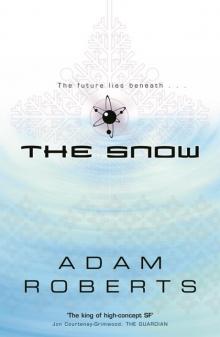 The Snow
The Snow Polystom (Gollancz Sf S.)
Polystom (Gollancz Sf S.)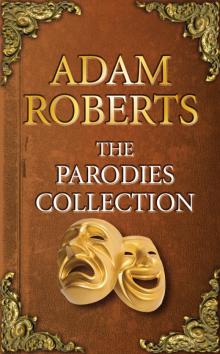 The Parodies Collection
The Parodies Collection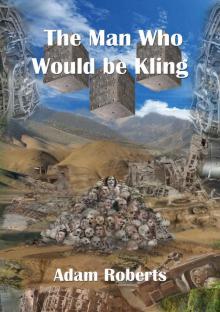 The Man Who Would Be Kling
The Man Who Would Be Kling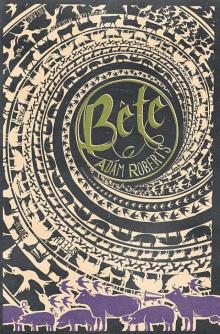 Bête
Bête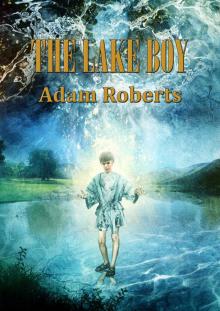 The Lake Boy
The Lake Boy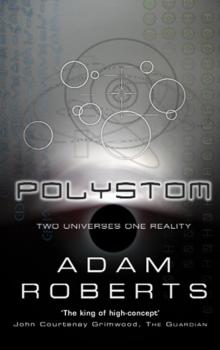 Polystom
Polystom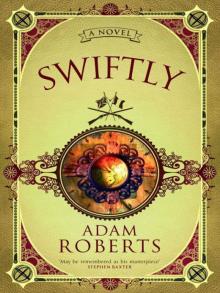 Swiftly: A Novel (GollanczF.)
Swiftly: A Novel (GollanczF.)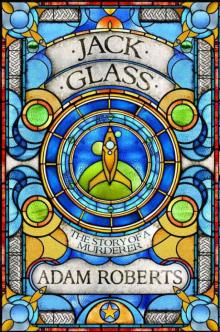 Jack Glass
Jack Glass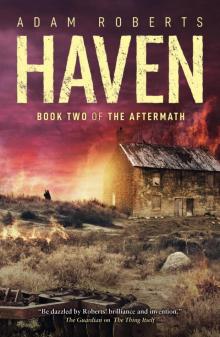 Haven
Haven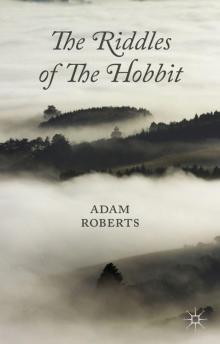 The Riddles of The Hobbit
The Riddles of The Hobbit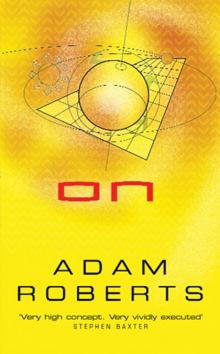 On
On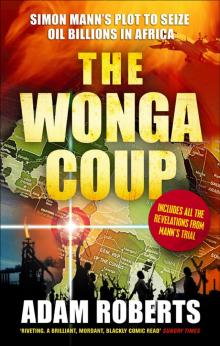 The Wonga Coup
The Wonga Coup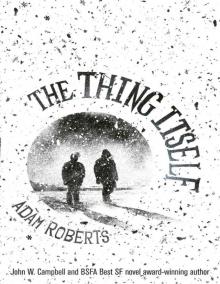 The Thing Itself
The Thing Itself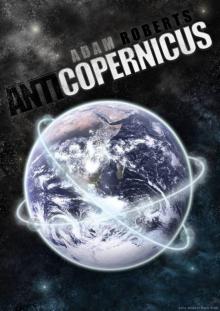 Anticopernicus
Anticopernicus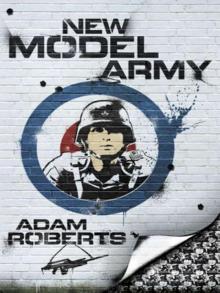 New Model Army
New Model Army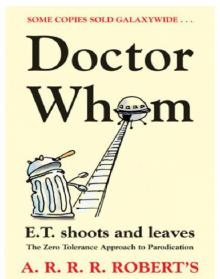 Doctor Whom or ET Shoots and Leaves: The Zero Tolerance Approach to Parodication
Doctor Whom or ET Shoots and Leaves: The Zero Tolerance Approach to Parodication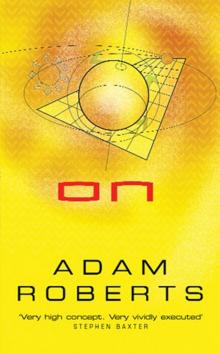 On (GollanczF.)
On (GollanczF.)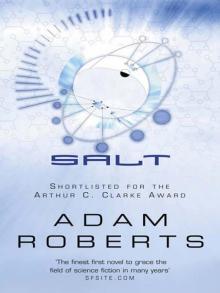 Salt
Salt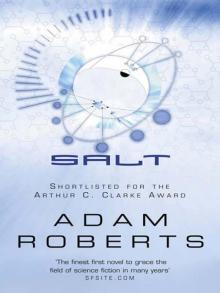 Salt (GollanczF.)
Salt (GollanczF.) By Light Alone
By Light Alone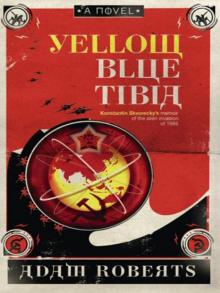 Yellow Blue Tibia
Yellow Blue Tibia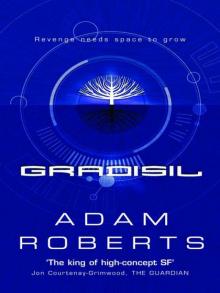 Gradisil (GollanczF.)
Gradisil (GollanczF.)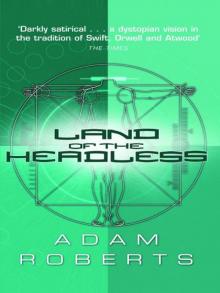 Land Of The Headless (GollanczF.)
Land Of The Headless (GollanczF.)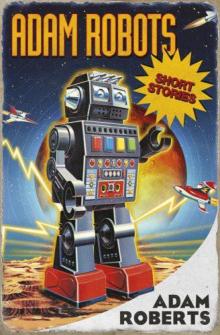 Adam Robots: Short Stories
Adam Robots: Short Stories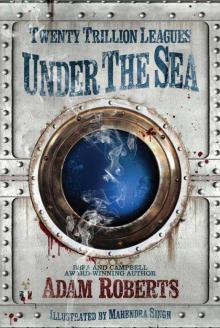 Twenty Trillion Leagues Under the Sea
Twenty Trillion Leagues Under the Sea